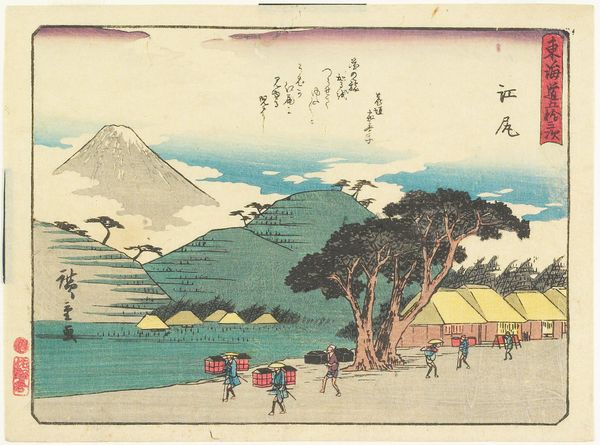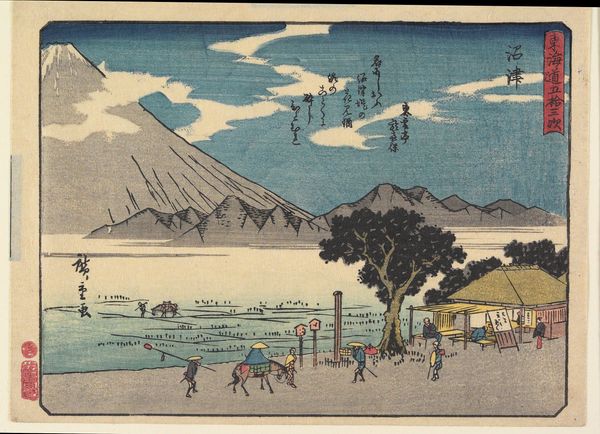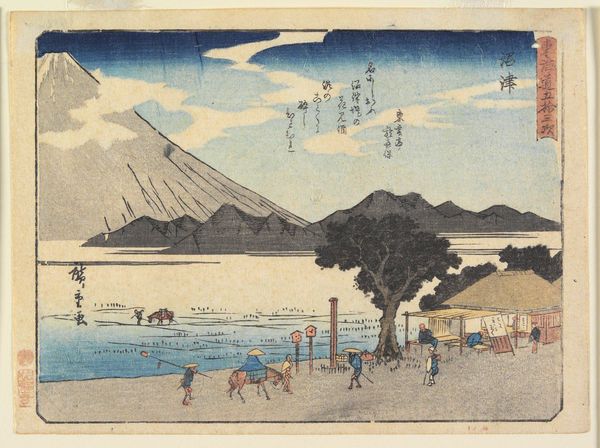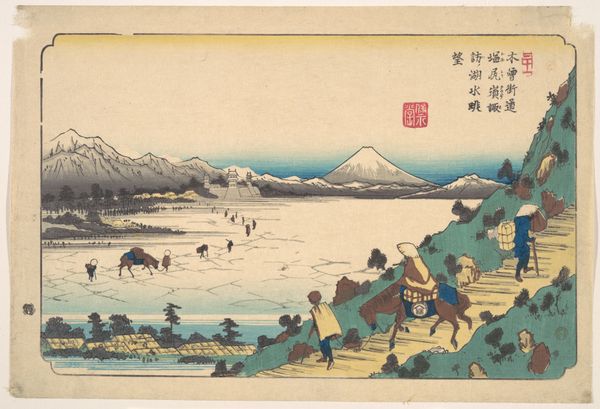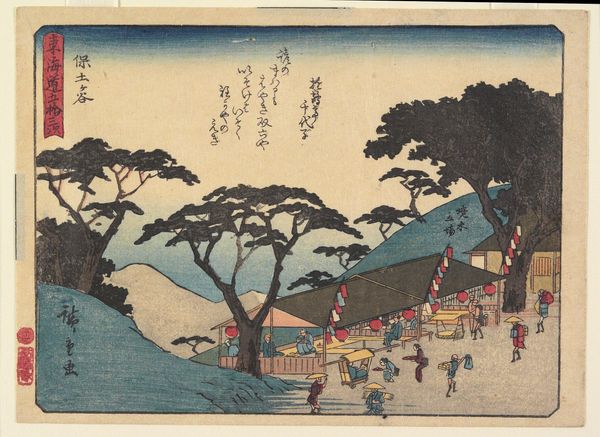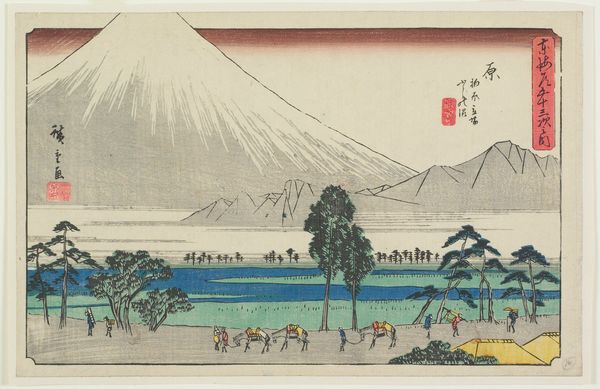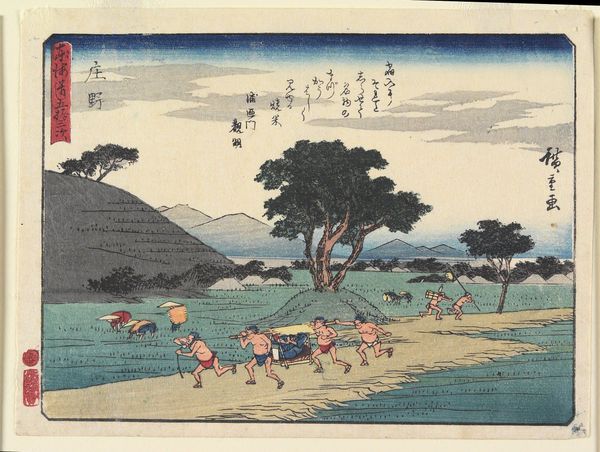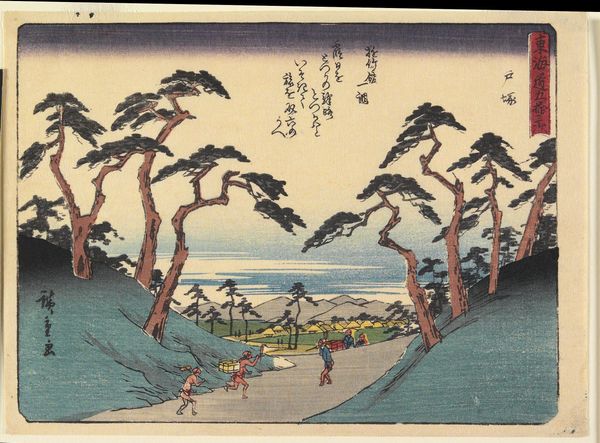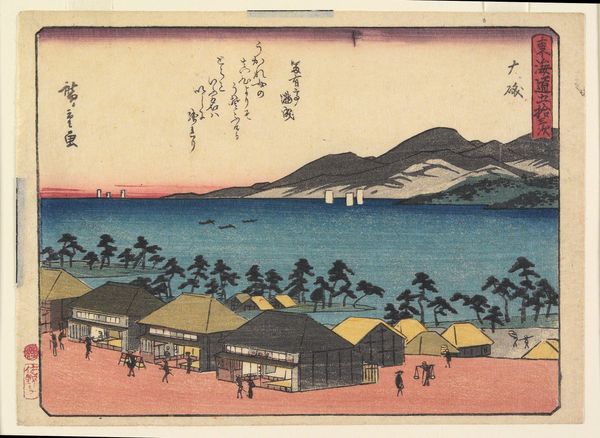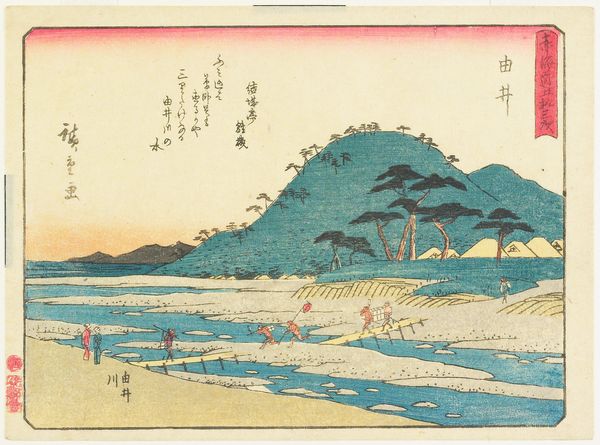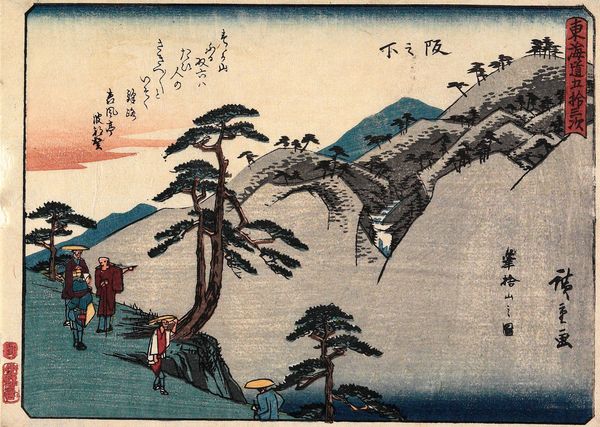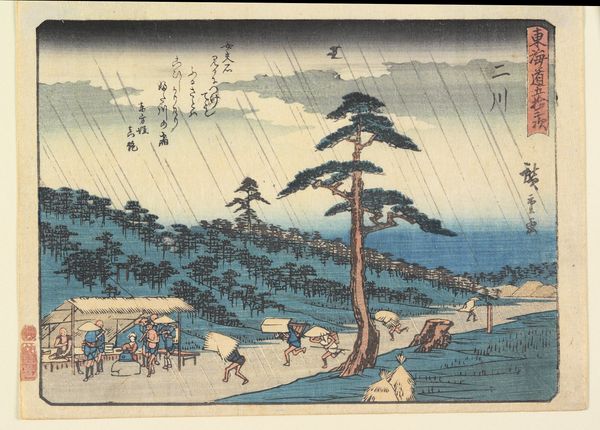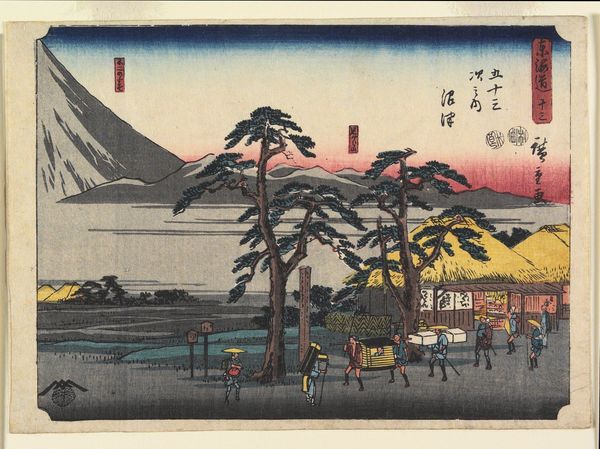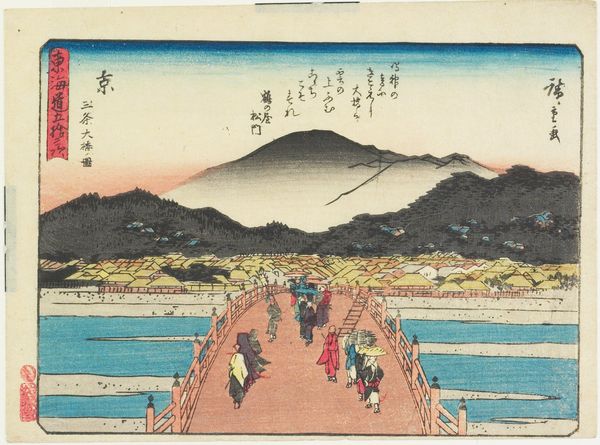
print, ink, woodblock-print
# print
#
asian-art
#
landscape
#
ukiyo-e
#
ink
#
woodblock-print
Dimensions: 6 1/8 x 8 1/4 in. (15.5 x 20.9 cm) (image)6 5/8 x 9 in. (16.8 x 22.8 cm) (plate)
Copyright: Public Domain
Curator: Oh, my goodness, the light in this print just shimmers! There's a gentle breeze, maybe? I can practically feel it! Editor: Indeed! What you are taking in is Utagawa Hiroshige's woodblock print, "Ejiri," created circa 1840-1842. This ukiyo-e piece is part of the "Fifty-three Stations of the Tōkaidō" series, capturing a scene along the road. Curator: Ah, "Fifty-three Stations"! That explains the travelling figures… They seem to be buffeted by that unseen wind. Their hats are pulled low, and look—those rice stalks are absolutely horizontal! The perspective, slightly elevated, somehow emphasizes their struggle… Editor: Precisely. Hiroshige’s composition draws on a bird's-eye view. You notice how he utilizes strong diagonals to lead our eyes? We are led from the foreground figures right into the landscape. Think about the politics of landscape, representing not only natural beauty but imperial control. Curator: Politics aside for a moment, the dreamy blue gradations! I am struck, personally, by the tranquil contrast. It’s all so… deliberate, isn't it? The way Mount Fuji sits there serenely as a hazy, monumental presence in the distance, sort of judging the figures… Does that make any sense? Editor: It does, because it prompts a dialogue about class. These woodblock prints were consumed largely by a merchant class gaining social influence during this period. How would you position Hiroshige’s landscape in response to or in service of this change? Consider also the position of women and marginalized genders as laborers during that time… Curator: Always pushing, aren’t you? Fine. Maybe that seemingly innocent landscape, and those bending stalks of rice, aren't just pretty to look at… They become representative of something broader. What initially feels simply elegant and aesthetically pleasing morphs, upon closer inspection, into something slightly charged, or… unsettled. Editor: A potent synthesis of form and content! By understanding the complex contexts from which it emerges, and by questioning it, an artwork that seems decorative offers ways to discuss politics. Curator: So, "Ejiri" ends up being less about a simple scene and more about the push and pull of social energies. Who knew a gentle breeze could be so... subversive?
Comments
No comments
Be the first to comment and join the conversation on the ultimate creative platform.
